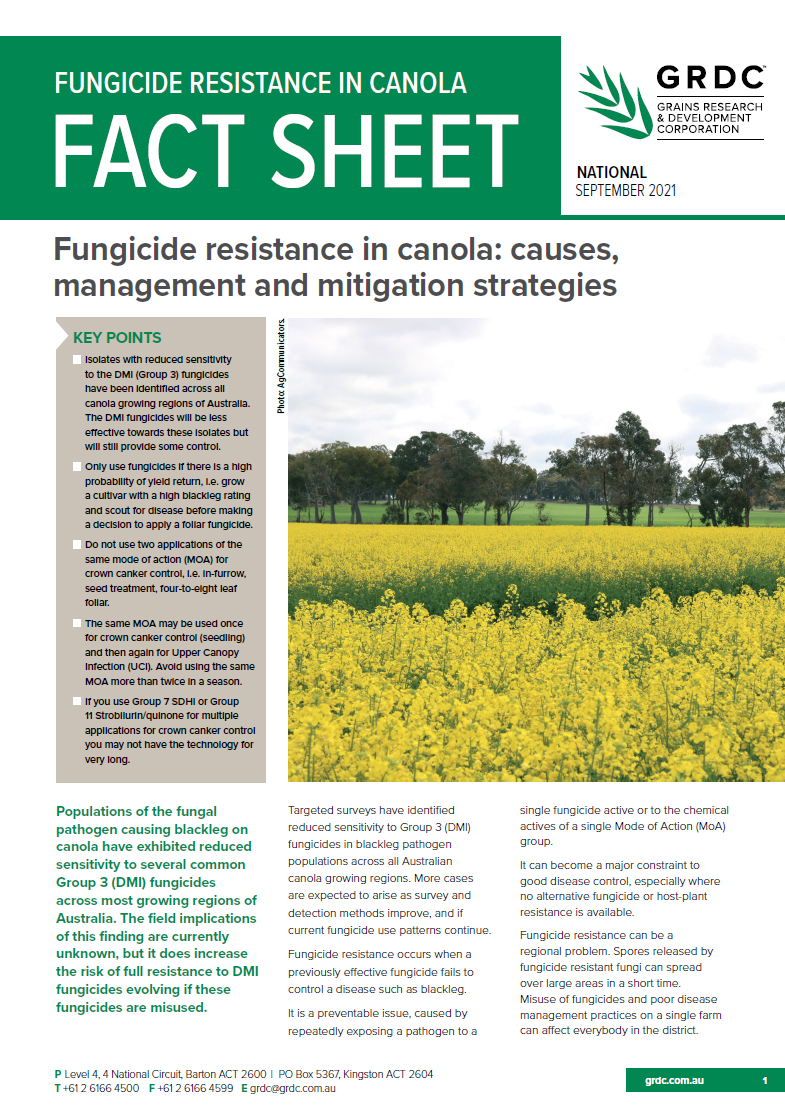Fungicide resistance in canola
Fungicide resistance in canola
Published: 16 Sep 2021
Populations of the fungal pathogen causing blackleg on canola have exhibited reduced sensitivity to several common Group 3 (DMI) fungicides across most growing regions of Australia. The field implications of this finding are currently unknown, but it does increase the risk of full resistance to DMI fungicides evolving if these fungicides are misused.
Key points
- Isolates with reduced sensitivity to the DMI (Group 3) fungicides have been identified across all canola growing regions of Australia.The DMI fungicides will be less effective towards these isolates but will still provide some control.
- Only use fungicides if there is a high probability of yield return, i.e. grow a cultivar with a high blackleg rating and scout for disease before making a decision to apply a foliar fungicide.
- Do not use two applications of the same mode of action (MOA) for crown canker control, i.e. in-furrow, seed treatment, four-to-eight leaf foliar.
- The same MOA may be used once for crown canker control (seedling) and then again for Upper Canopy Infection (UCI). Avoid using the same MOA more than twice in a season.
- If you use Group 7 SDHI or Group 11 Strobilurin/quinone for multiple applications for crown canker control you may not have the technology for very long.
Download PDF
Region: National
GRDC Project Code: CUR1905-001SAX,

